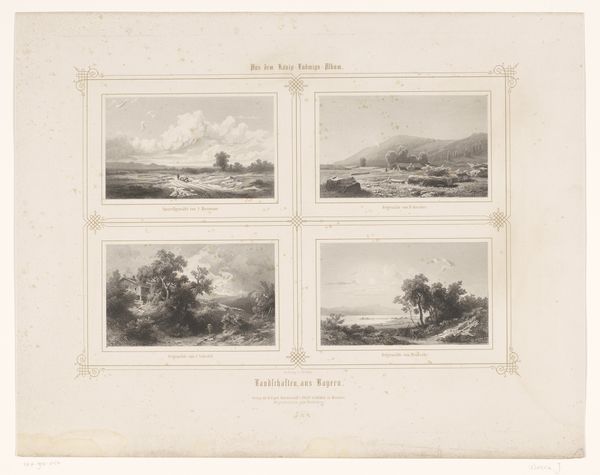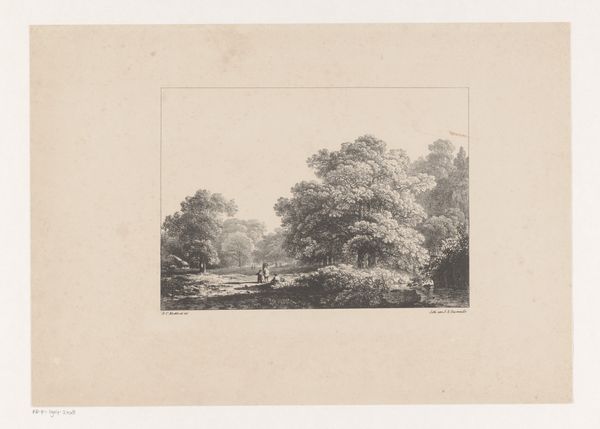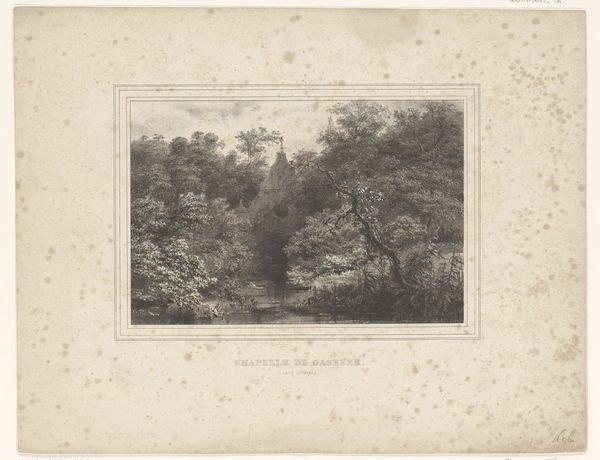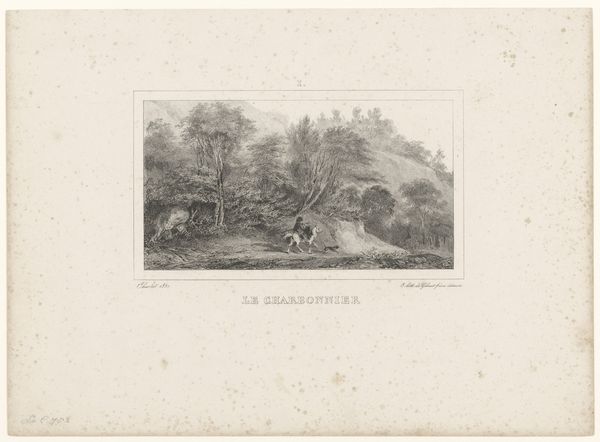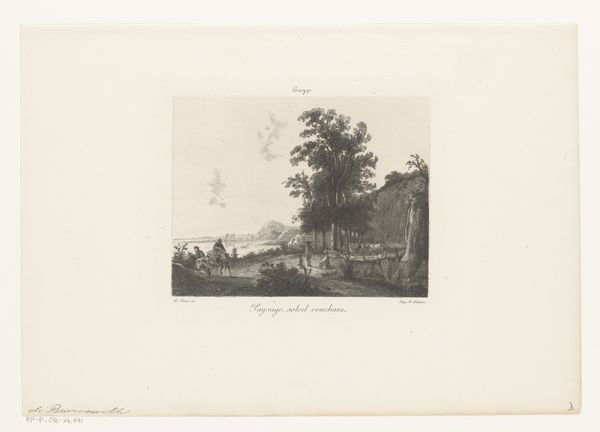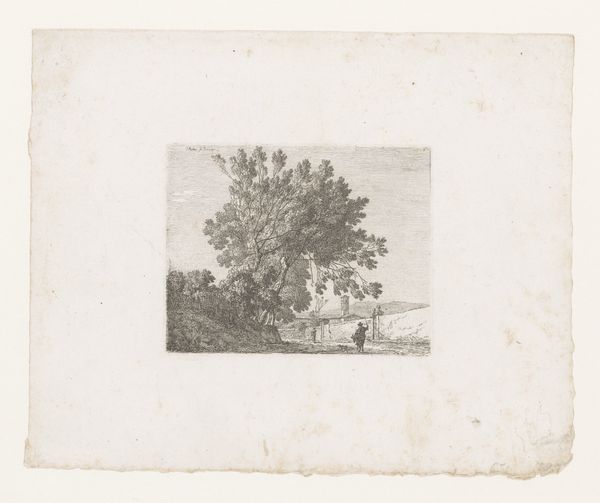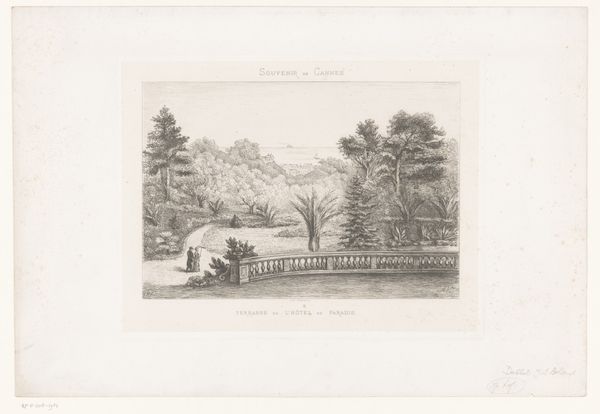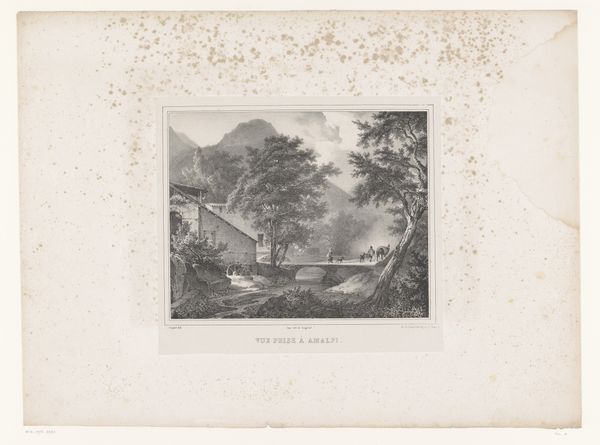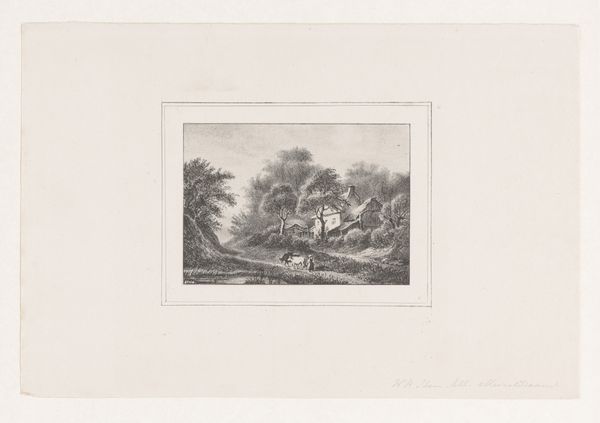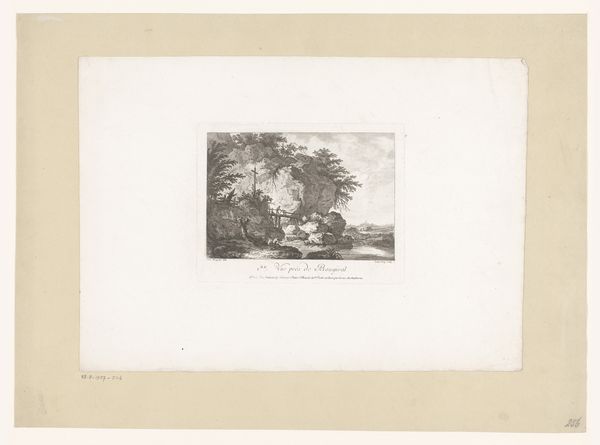
Dimensions: height 415 mm, width 555 mm
Copyright: Rijks Museum: Open Domain
Curator: This engraving from the 1850s by Carl Friedrich Würthle is titled "Drie Duitse landschappen," or "Three German Landscapes." It offers three distinct vignettes. What are your initial thoughts? Editor: Stark contrasts. It is quite serene, yes? The stark differences in shading creates a peaceful viewing experience despite what one would anticipate due to its German Expressionism influences. Curator: Yes, serene, yet the German Expressionist element you astutely noted is unmistakable in its raw emotional conveyance, a feeling intensified by Würthle’s meticulous printmaking. Focus on the materiality—the textures he achieves. It really lends weight to each element depicted. Editor: Agreed, and each landscape could be interpreted through the lens of agrarian labor. Observe the middle composition—a small gathering with horses near a religious shrine in the woodlands. Who are these individuals, and are they the aristocracy surveying their domain, or farm laborers giving thanks after a successful crop yield? What sort of colonial influences helped encourage these prints to exist? Curator: An interesting perspective! And what do you make of the composition as a whole? I mean, in terms of spatial dynamics and the relationship between the figures and the surrounding environment. Editor: All power dynamics begin at land ownership, no? Perhaps it's Würthle himself inviting us to question ownership— or lack thereof. Curator: Or consider the individual trees as almost allegorical figures—their forms mirroring human posture and perhaps embodying aspects of the German character and landscape at the time. These trees have stories, they represent deep histories in this colonialized world. Editor: It reminds me of how much discourse of national identity, cultural heritage, and even environmental stewardship are contained with a single visual work of art, and a powerful colonial statement to make at that. It can provide much needed historical nuance on those difficult subjects. Curator: Exactly! In a few carefully placed lines, Würthle creates a compelling and subtly affecting composition to this landscape's artistic statement. Editor: It really encapsulates why I feel Würthle should be given more historical relevance to his art and societal discourse contributions.
Comments
No comments
Be the first to comment and join the conversation on the ultimate creative platform.

